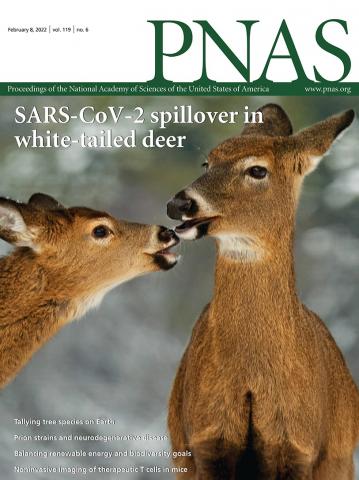View Item
- xmlui.general.dspace_homeCentros Regionales y EEAsCentro Regional Patagonia SurEEA Santa CruzArtículos científicosxmlui.ArtifactBrowser.ItemViewer.trail
- DSpace Home
- Centros Regionales y EEAs
- Centro Regional Patagonia Sur
- EEA Santa Cruz
- Artículos científicos
- View Item
The number of tree species on Earth
Abstract
One of the most fundamental questions in ecology is how many species inhabit the Earth. However, due to massive logistical and financial challenges and taxonomic difficulties connected to the species concept definition, the global numbers of species, including those of important and well-studied life forms such as trees, still remain largely unknown. Here, based on global groundsourced data, we estimate the total tree species richness at global,
[ver mas...]
One of the most fundamental questions in ecology is how many species inhabit the Earth. However, due to massive logistical and financial challenges and taxonomic difficulties connected to the species concept definition, the global numbers of species, including those of important and well-studied life forms such as trees, still remain largely unknown. Here, based on global groundsourced data, we estimate the total tree species richness at global, continental, and biome levels. Our results indicate that there are ∼73,000 tree species globally, among which ∼9,000 tree species are yet to be discovered. Roughly 40% of undiscovered tree species are in South America. Moreover, almost one-third of all tree species to be discovered may be rare, with very low populations and limited spatial distribution (likely in remote tropical lowlands and mountains). These findings highlight the vulnerability of global forest biodiversity to anthropogenic changes in land use and climate, which disproportionately threaten rare species and thus, global tree richness.
[Cerrar]

Author
Cazzolla Gatti, Roberto;
Reichd, Peter B.;
Gamarra, Javier G.P.;
Crowtherh, Tom;
Hui, Cang;
Morera, Albert;
Bastin, Jean-Francois;
de-Miguel, Sergio;
Jan Nabuurs, Gert;
Svenning, Jens -Christian;
Peri, Pablo Luis;
Liang, Jingjing;
Fuente
PNAS 119 (6) : e2115329119 (2022)
Date
2022-02-08
Editorial
National Academy of Sciences
ISSN
0027-8424 (print)
1091-6490 (online)
1091-6490 (online)
Formato
pdf
Tipo de documento
artículo
Palabras Claves
Derechos de acceso
Abierto
 Excepto donde se diga explicitamente, este item se publica bajo la siguiente descripción: Creative Commons Attribution-NonCommercial-ShareAlike 2.5 Unported (CC BY-NC-SA 2.5)
Excepto donde se diga explicitamente, este item se publica bajo la siguiente descripción: Creative Commons Attribution-NonCommercial-ShareAlike 2.5 Unported (CC BY-NC-SA 2.5)


